Podcast: Play in new window | Download
Subscribe: Apple Podcasts | RSS
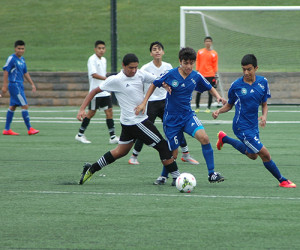 As I mentioned last week I took some of my teams to a Labor Day tournament over the weekend. Taking three teams made for a busy weekend but the teams played well and I enjoyed spending time with them away from home.
As I mentioned last week I took some of my teams to a Labor Day tournament over the weekend. Taking three teams made for a busy weekend but the teams played well and I enjoyed spending time with them away from home.
My younger teams played in traditional tournaments brackets with the top two teams playing in the final. My high school age team just played three teams of similar ability with no final. I think this is a great way to format the tournament for the different age groups.
The teams progressed well throughout the weekend and we were able to work on some things that will help us to continue to improve throughout the rest of the fall season.
One challenge though was the placement of one of my younger teams. It’s not one of the top teams in our club and we registered for the Silver bracket rather than Gold. That’s what we have played in previous tournaments and the competition has been very appropriate for our skill level. This Silver division was much weaker than we’ve seen in the past so the results were pretty lopsided all weekend. This is not as much fun for either team but from time to time your team will find itself either overmatched or under challenged. We did the best we could to work on things and not run up the score.
Next week I’ll talk about ways to deal with these situations so that your team can learn as much as possible even in games with a lopsided result.
This week I want to talk about different ways to plan your training session. I’ll look at the three methods I’ve used and give you examples of how each one works as well as the advantages and disadvantages of each one.
Players have different learning styles and it’s up to us coaches to present topics and ideas in different ways so that every player can learn and progress.
Three Ways to Organize Your Sessions
As a young coach I always organized my session in the same way: simple to complex. This is the way I was taught through my USSF Licensing Courses and this was what I always stuck to. Only in the last few years have I found that there’s more than one way to set up an effective training session. The three methods I use now are: Simple to Complex, Whole/Part/Whole and a Multi-Themed Session.
I’ll talk about how to use each of these methods as well as the advantages and disadvantages of each one. As with any tool, there is a right time and a wrong time to use it and picking the right tool for the right time is often the most important decision.
This is not a science, there is no specific formula that you can follow to achieve the results you want. Coaches need to be able to sense what the players need and know how to get this information across to them.
Players have different learning styles, they don’t always understand things the way we present them. Some players need to see it drawn out as a diagram. Others can learn by being told how the exercise works. Still others have to do it to understand it. As coaches we need to ‘Meet them where they are’. By using some combination of all of these methods.
The different organizational methods I’ll describe are different tools. Our job is to pick the right one from our toolbox for the job.
Simple to Complex
The Method
- Starts with a skill in its simplest form
- Gradually adds complexity
- Until you are dealing with the whole skill in a game situation
- You could also call this a progressive practice
- This is the method preferred by US Soccer
- It’s the one you will learn when you take a USSF coaching course
Example
Passing in Pairs
Diamond Passing
4 v 1
4 v 4 + 2
- Non Directional
- Directional
5 v 5
- Three passes before you score
- Free Play
Advantages
- Makes sure the players can perform the simple first
- Progressively adds difficulty
- You might stop if the team is having trouble
- Regress if they need to have it easier
Disadvantages
- Not engaging from the start
- Might be covering something that the players already do well
- Hard to see the connection to the ‘real game’ at the start
Uses
- New Skill
- Building on similar skills
Whole Part Whole
The Method
- Begin with the whole game
- Or a modified version
- See what they need to learn to improve performance
- Teach those ‘Parts’
- Return to the whole game to apply those ‘Parts’ to the ‘Whole’
- Often using a different game
- This is the method taught in the French Federations Elite Formations Course
- I learned about this from our Academy Director and the Sporting KC Goalkeeper coach who had both taken the course
Example
4 v 4 + 2
- Passing may be good but players aren’t getting open well
Diamond Passing
- Work on body shape and look at the diamond of support
4 v 1
- Talk about creating angles and options for the player with the ball
5 v 5
- Three passes before you score
- Free Play
Advantages
- Fun and engaging for the players to start with a game
- Gives you a chance to coach within that game and see how players respond
- Don’t stop the game just coach as it goes on
- Take the aspects they are struggling with and specifically work on those
- Don’t waste time working on what they already do well
- Return to the game and see the improvement they’ve made
- Easy to see the connection between the skills and performance
Disadvantages
- There may be too many things to correct
- Don’t know where to start
Uses
- More experienced teams
- Building on a previous session
- Working with a new team you don’t know
Multi Themed Session
The Method
- Changing focus from one skill to another
- Cover three or four skills during a session
- Station Training
Example – Our Technical Training
- Change of Direction
- Passing
- Moves
- Shooting
- 4 v 4 Game
Advantages
- Cover number of skills in one session
- Interesting for the players
- Can be done with three or four teams together in a rotation
Disadvantages
- No time to progress skills very far
- Hard to connect the skills to the game
Uses
- End of the season
- You want to refresh certain unconnected areas
- Defensive Principles
- Possession
- Finishing in and around the box
- Free Kicks
- You want to refresh certain unconnected areas
- Technical Training
I’ve used these methods with my own teams. My favorite way to use the Whole Part Whole method is following a session when I’ve taught a skill or tactical concept using the Simple to Complex method. For example, I would run the Simple to Complex Passing Session on Tuesday and follow that with the Whole Part Whole Session on Thursday. The Thursday session would begin with the 4 v 4 + 2 and then I would review whichever parts of the session that the players didn’t retain.
These are three very effective ways to structure your training sessions. You might find that your players respond better to one or the other. You might also find that which one works best depends on what type of technical or tactical concept you’re trying to get across.
I would suggest that you experiment with each of them in a number of different ways and find out what works best for you and your team. Along the way you will be adding new methods to your coaching toolbox.
Printable Show Notes
The show notes for each episode are accessed through the WCC Training Center.
They are FREE but you will need at least a Free Membership to the Training Center in order to view and print them.
Click on the image of the notes and if you’re already logged in to the Training Center you’ll be taken to the Podcast page. If you’re not logged in your be taken to a login page where you’ll also be able to login or register if you are not already a Member.
Remember!
Make sure you subscribe to Coaching Soccer Weekly through iTunes, or your podcast provider of choice, to be sure you never miss an episode.
We would appreciate it if you would leave us a 5 star rating and/or a written review on iTunes to help spread the word about the show and ensure that we can continue to bring you top notch guests in the future.
In the Next Episode
I’ll discuss how you can get the most of out of games with lopsided results. We’d all love to have each of our games to be evenly matched but that just isn’t possible. Having some strategies for dealing with these situations, whether you’re up by a lot or down by a lot, will help your team learn as much as possible from them.

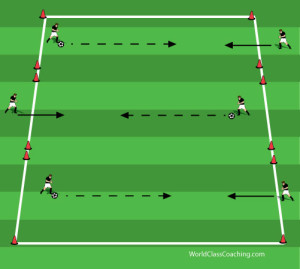
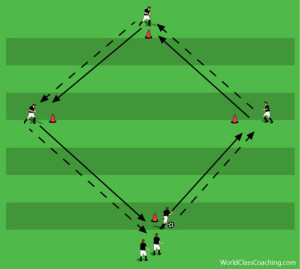
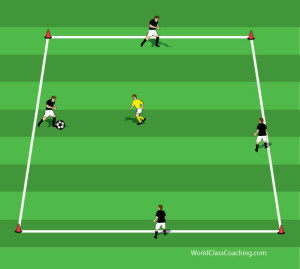
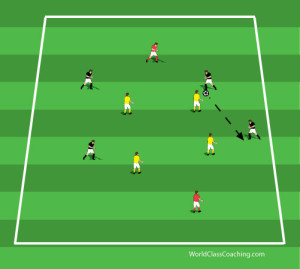
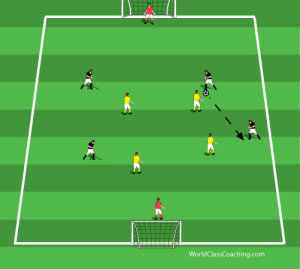
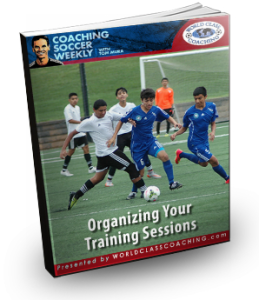
i believe that is a good way to coach an akademy team.i will try it in my next training and i will come back to you with my comment.
great stuff
Thanks Coach!
Used your philosophy on lop sided games, which I totally agree with. Once we were the hammer and once we were the nail. But we made both game fun!👍🏻